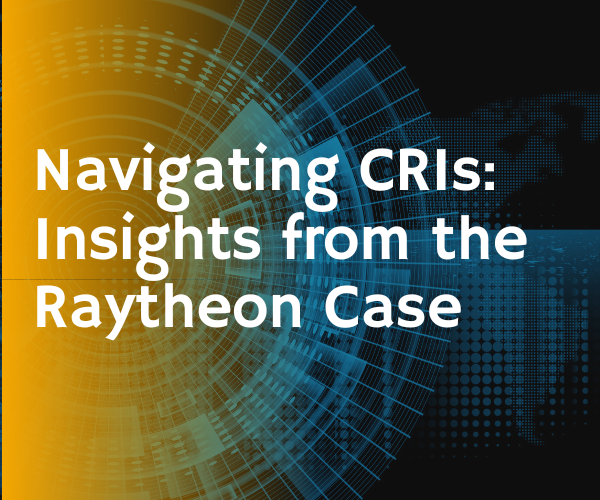Section 3 of the Patents Act, 1970 (the Act) puts forth the criteria of what does not fall under the ambit of “inventions”. Inventions, as defined under Section 2 if the Act denote “…a new product or process involving an inventive step and capable of industrial application…”where “inventive step” is marked by any feature which is a technical advancement from the existing knowledge in the domain, where this advancement is non-obvious to a person skilled in the art. In the same stride, the Act puts down various situations in which such a technical advancement would not be considered an invention.
While the list provides clarity via Section 3 (a) to (p), the interpretations of each of these clauses, through judicial pronouncements, delineate the perspective Courts have been taking while determining whether an invention falls under Section 3 or not.
Clause (k) of Section 3 particularly excludes mathematical or business methods or a computer programme per se or algorithms from the ambit of exclusions. A recent case in the Delhi High Court has brought to light the complexities involved in determining whether an invention falls within Section 3(k) or not. Raytheon, the appellant company, filed an appeal against the order of the Assistant Controller General of Patents and Designs which refused Raytheon’s patent on the grounds of lack of distinctiveness and non-patentability under Section 3(k) of the Act.
Raytheon argued that the Order was erroneous due to reliance on the outdated Computer Related Inventions guidelines. More so, the patent pertained to High-Performance Computing (HPC) with the technological advancement of removing problems relating to scalability, reliability, and efficient operation particularly regarding cluster management software.
The inventive step as designated in the application reduces time associated with scheduling job execution in HPC systems with a direct impact on reduced computational demands. However, the underlying argument from the Controller’s office pertained to the aspects of software and hardware. Since the patent particularly consisted of software, the lack of novel hardware resulted in refusal of the patent grant. Adding on to this factor, it was argued that the patent used generic methods and systems which are excluded under Section 3(k).
The Court recognized the reliance by the Controller on the outdated guidelines by examining the impugned order. More so, the requirement of novel hardware was negated due to lack of basis in law. Few aspects which are highlighted by the Court include the rationale behind adding the term “per se” in the Section 3(k). The analysis in Ferid Allani provided guidance where, in the current times, it would be difficult to perceive such a bar in totality as computer programs have become an indispensable part of daily life. Inventions would also suffer if an interpretation including any and all computer based inventions would be taken. Thus, as clarified by the legislative intent as well as judicial pronouncements, the prohibition imposed on patentability pertains to computer programs “Per se” and any ancillary inventions would not be automatically rejected in such scenarios. In order to determine the line that would separate a computer program “per se” versus an ancillary invention, the case of Microsoft Technology Licensing comes as reference. The case highlights that examiners must move beyond the aspect of assessing the claims solely, but rather analyze the substance of innovation as is also reflected in the 2017 CRI guidelines.
The second stage to this argument pertains to how to assess such an invention. Drawing from the EU’s position, if an invention, despite being based on a computer program, showcases “technical effect” or “technical contribution”, then it is patentable. The Court took the view that the ambit of “technical effect” and “technical contribution” has been explained through precedents as well as practice. However, “technical effect” and “technical contribution” does not find a definition in the 2017 CRI guidelines but instead finds place in the 2013 guidelines where “’technical effect’ was defined as solution to a technical problem, which the invention taken as a whole, tends to overcome. The definition provided examples which included higher speed Reduced hard-disk access time, more economical use of memory, more efficient database search strategy, more effective data compression techniques etc.
While the Court directed that the patent examination would have to be conducted afresh, the case brought to light the Patent Office’s reliance on outdated CRI guidelines. It further solidified the stance that the requirement for novel hardware is not required while assessing CRIs. The case also brings lucidity to the criteria for assessing patents, drawing from previous judgments as well as clarifying the current stance on CRIs. This marks another milestone towards modernizing patent examination procedures and is a step that aligns with global practices and encourages innovation within the software domain. This forward-thinking approach ensures that genuine technological advancements, including those driven by computer programs, are not stifled by rigid patent regulations. Furthermore, the court’s stance on patentability aligns with international standards, making Indian patent law more compatible with global norms. This harmonization facilitates international patent applications for Indian inventors while recognizing that many contemporary innovations, rooted in computer programs, can yield significant technical advancements. By promoting a flexible and adaptive approach to patent examination in the digital age, the judgment safeguards innovation and ensures that India remains at the forefront of technological advancements on the global stage.
In conclusion, the recent case has brought important clarity to the interpretation of Section 3(k) of the Patents Act, 1970, which excludes computer programs “per se” from patentability. The Court’s ruling emphasized that the requirement for novel hardware is not a mandatory condition for the patentability of Computer-Related Inventions (CRIs) and that the focus should be on the substance of innovation rather than a strict interpretation of claims.



